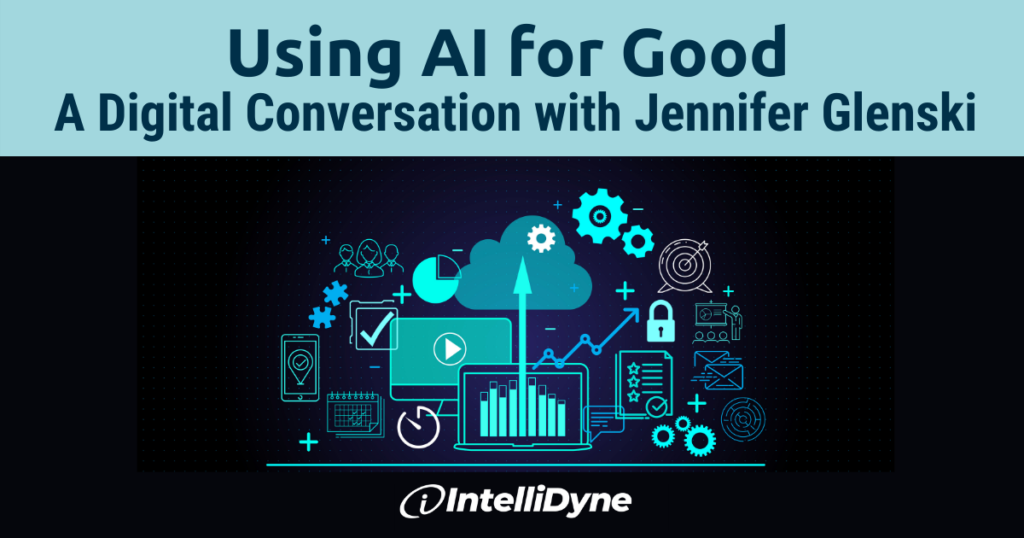Jennifer Glenski leads IntelliDyne’s Artificial Intelligence (AI) and Machine Learning Practice, managing a portfolio of analytics programs that range from developing Natural Language Processing (NLP) tools to building intelligent assistants using Robotic Process Automation (RPA). She received the AFCEA 40 Under 40 award in 2022, the Northern Virginia Technology Council’s NextGen Leader award in 2021, and actively supports women and young people pursuing careers in technology through mentoring, hackathons, and speaking engagements. We asked Jennifer to answer some questions about her background, the real-world applications of AI, and how AI can be used in solving some of the Federal Government’s biggest challenges.
Did you always know you wanted to pursue a career in Science, Technology, Engineering, and Mathematics (STEM)?
As a kid, I wanted to be a baker, for unlimited access to cakes, or an Olympic soccer player! When I was in elementary school, I didn’t expect to be using math and data every day in my career, since I had a lot of anxiety about math. My mother and teachers kindly helped me overcome this hurdle so I could experience the fun side of STEM. Eventually, I went on to earn a Bachelor of Arts in Mathematics from Minnesota State University Moorhead and a Master of Science in Analytics from the Georgia Institute of Technology. Now, I love combining data, analysis, and computer systems into creative new solutions that automate tasks that traditionally relied on human intelligence, such as decision-making or understanding language. I would recommend a career in STEM to anyone interested in making a positive impact with innovation.
Can you describe a project that illustrates the power of AI and Machine Learning?
During the height of the pandemic in 2021, I led a product development team to build a suite of natural language processing (NLP) tools for The Department of Veteran Affairs. The VA needed to analyze medical research portfolios at a scale that would be impractical for humans to do manually—millions of clinical studies and medical research publications. Our new tools were able to identify critical research gaps, highlight influential researchers and beneficial partnerships between institutions, and align future research areas to strategic goals.
How is the VA’s use of AI supporting the common good?
The insights provided by my team’s AI/Machine Learning solution for the VA are critical in influencing funding decisions, which in turn advance research in key medical areas. Ultimately, AI improves health outcomes for the Veteran community with information that cannot otherwise be obtained and analyzed at the same scale, depth, or speed.
How do you use Automation?
Currently, I manage a development program to build an intelligent assistant that integrates AI, NLP, and robotic process automation (RPA) to support network and data operations. It will be a critical component to enable the DOD to deploy autonomous transportation in the future. Using a smart, touch-screen interface, engineers will be alerted to emerging or potential problems and provided recommendations for the best course of action to mitigate the issues. The objective is that this solution will reduce lives lost due to system failures by predicting potential system degradation and automating preventative action.
What interests you about working in the analytics field?
The challenge of applying analytics or AI to solve important problems for customers and build new tools is what interests me. I enjoy learning about the customer and their unique needs and mapping a path forward to build a new, useful solution for them. Working in this field, I also get to be curious, ask a lot of questions, and explore new technology trends, which keeps the work interesting!
What do you do outside of work?
In my free time, I enjoy volunteering and mentoring a team of 30 amazing volunteers at a regional animal shelter.

